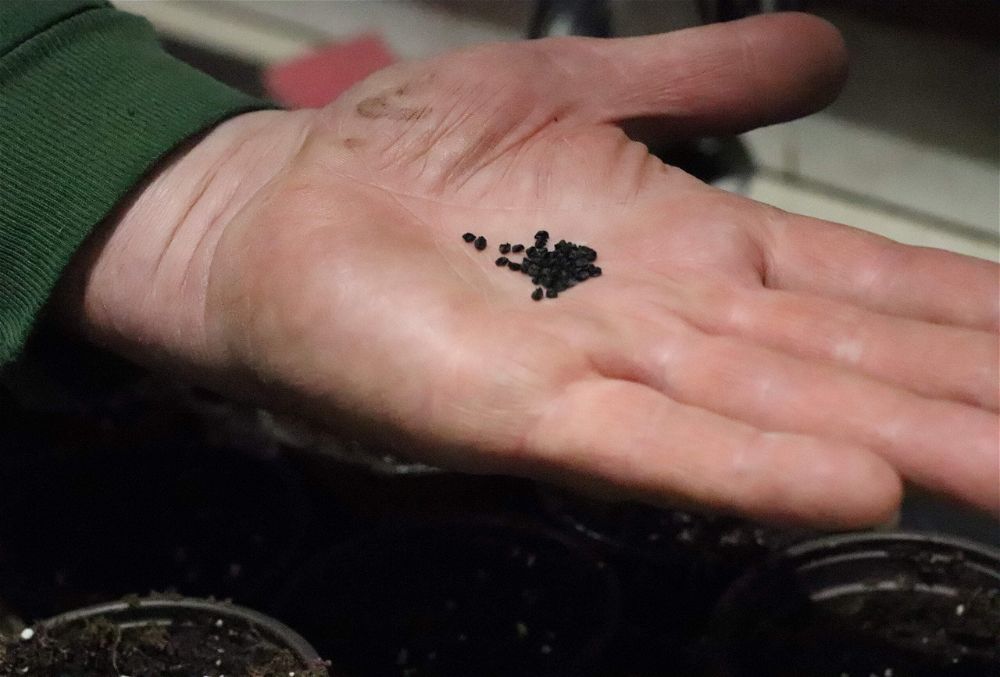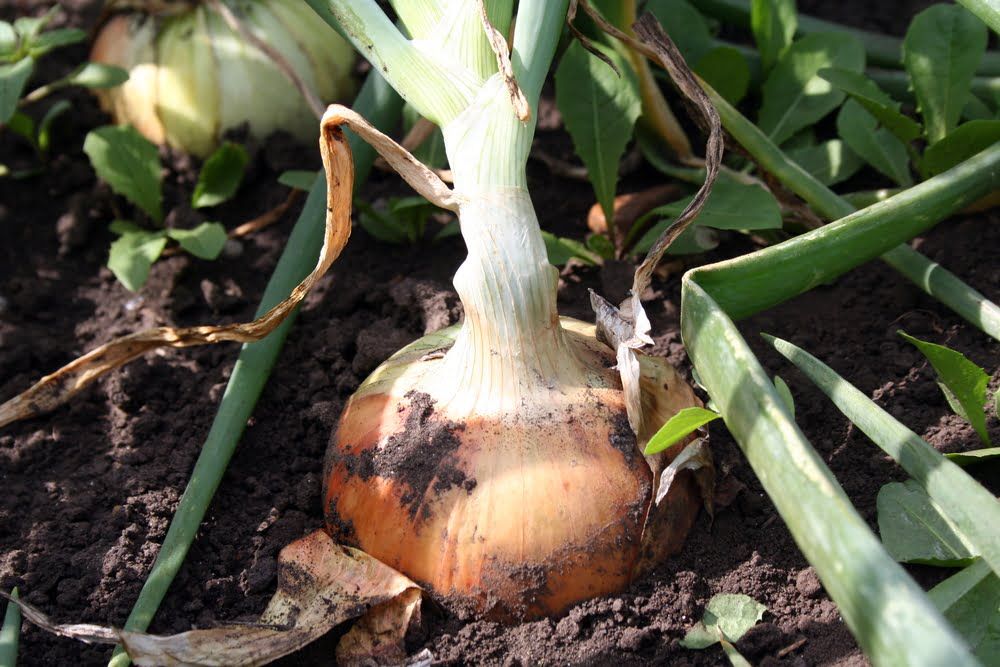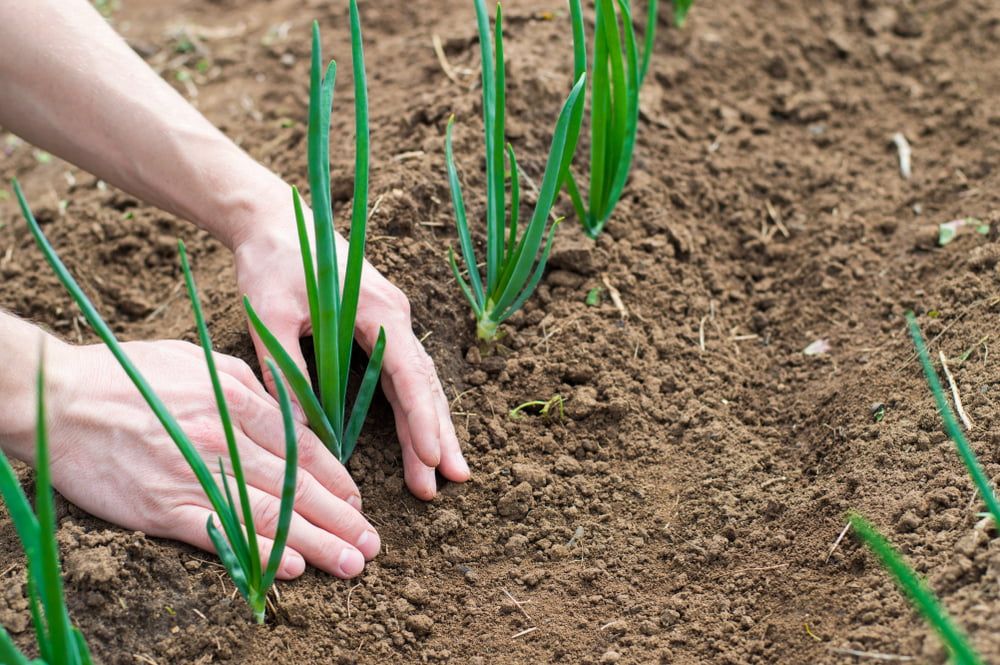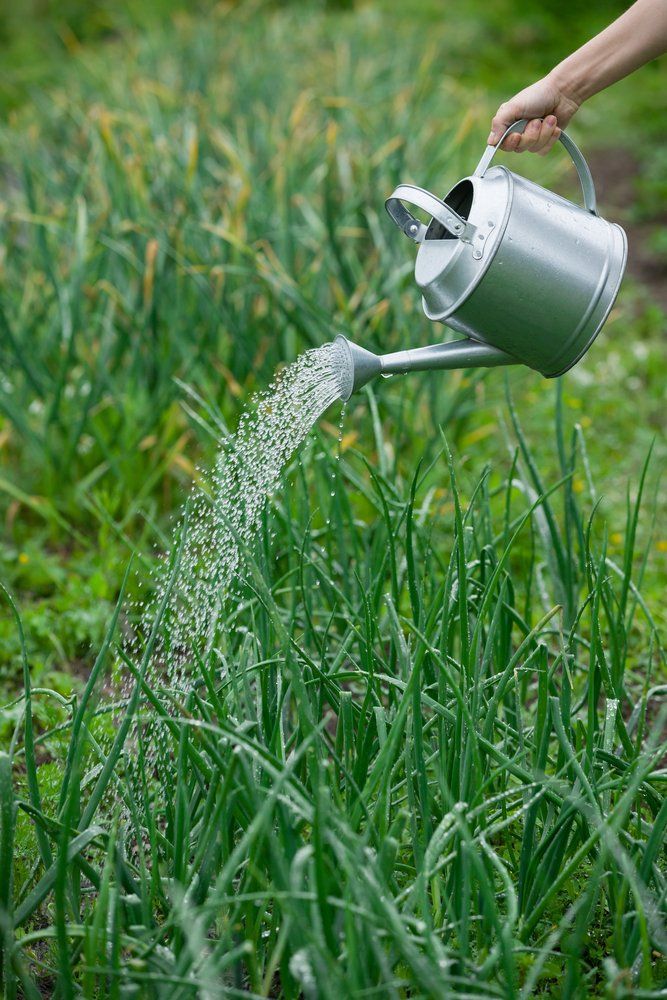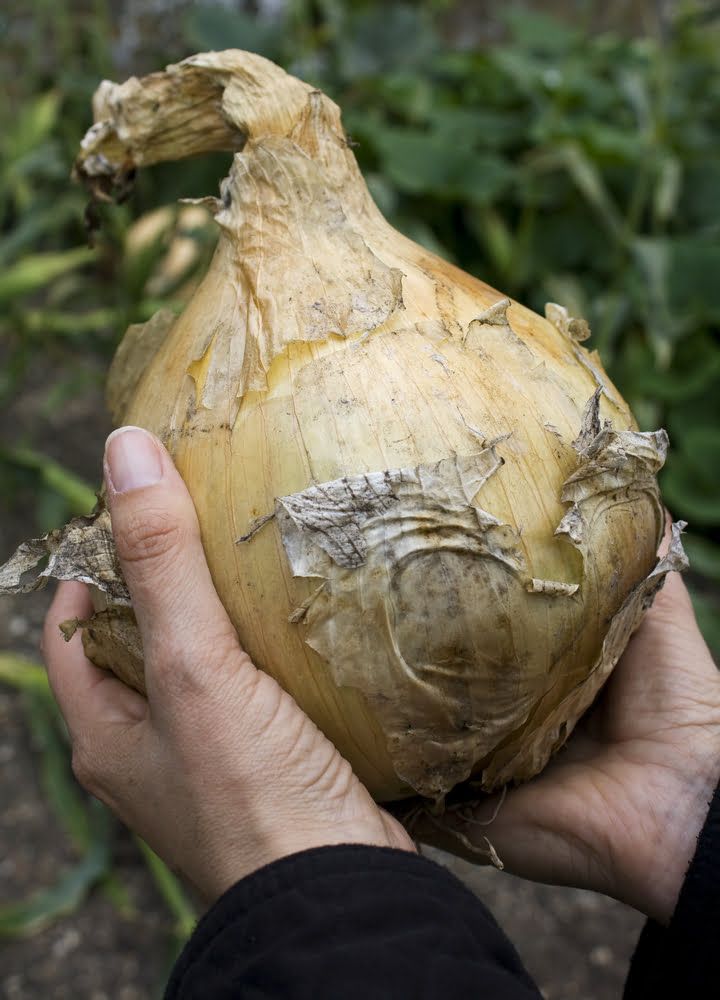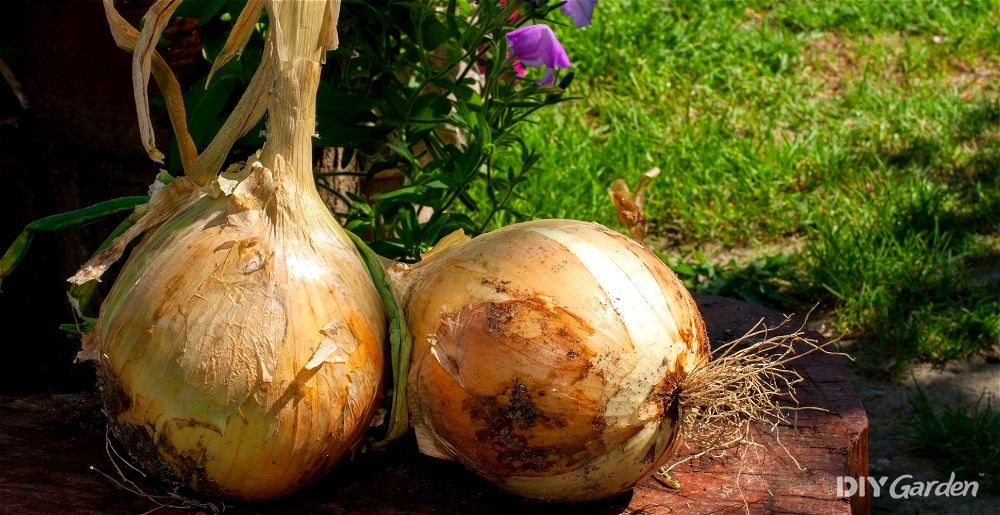
There’s a myth out there that giant onions, those same ones that you see winning country shows, don’t taste good, but this is definitely not the case. In fact, grow them correctly and you’ll not only end up with onions large enough to make your family and friends jealous, but you’ll also be able to enjoy a delicious harvest that can be used in the kitchen in so many ways.
Growing Giant Onions: A Quick Snapshot
When to Sow – Nov-Jan
When to Plant – Mar-Apr
When to Harvest – Jul-Aug
Average Yield per Plant – 5-8kg
Spacing – 30-60cm
Depth – 3cm
How to Grow Giant Onions at Home
Giant onions aren’t the easiest vegetable to grow, which is why they’re often grown competitively. There are a few key factors to keep in mind when attempting to grow record-breaking onions.
Sow Your Seeds Early
While onion variety and seed quality are important, the secret to growing giant, exhibition-sized onions is to sow your seeds early.
Ideally, your giant onion seeds should be sown in November or December. Many gardeners choose to wait until the end of December when natural light levels start to increase, but feel free to get sowing earlier if you have access to grow lights.
Make Sure That You’ve Got Enough Space
The world record for the heaviest onion currently stands at 8.5kg, with the onion measuring more than 76cm in diameter.
Of course, that very special onion had some serious attention lavished over it while it was growing, which is something that the average gardener isn’t likely to do. Still, it’s important to make sure that you’re able to give your giant onions plenty of space.
The more space your onions have, the larger they will be able to grow – 30cm is a minimum when it comes to spacing.
If you don’t have much garden space to work with, this doesn’t mean that you need to give up on your record-breaking dreams. Simply sow a few seeds and grow them on in large pots. This way, you’ll still be able to give each onion plenty of room, and it will also be easier to individually care for each one.
READ NEXT: How to Fill Large Pots for Plants
How to Grow Giant Onions from Seed
If you want to grow giant exhibition onions, your only option is to grow them from seed. You may be able to find onion sets available, but your harvested bulbs will be much larger when grown from seed.
Sowing Giant Onion Seeds
It’s best to start giant onion seeds in individual modules or pots, since this gives them lots of room to grow. If you are able to sow your seeds in pots that are around 6-7cm in diameter, then this will save you from having to prick your seedlings out in a few weeks.
Fill your pots with a quality compost, leaving a few centimetres of space at the top. Water the soil and then wait a few minutes for the soil to settle.
Then, place an onion seed over the top of the compost in each pot, before lightly covering them over with a thin layer of sieved compost. Gently water each pot again.
Try to keep the pots at a consistent temperature of around 20°C. A heated propagator can really help with this.
Pricking Out Giant Onion Seedlings
You’ll notice seedlings start to emerge in each pot in about a week. They’ll look pretty bent over at first, but they’ll soon start to straighten up.
At this stage, if you have sown your seeds into smaller modules, you’ll need to prick your seedlings out into slightly larger pots.
To do this, fill 6-9cm pots with compost, leaving a hole in the centre that’s large enough to accommodate all of the soil from each module. Then, move each seedling over, taking as much soil as possible with you to prevent disturbing the roots.
Gently firm the soil down so that the seedlings are properly nestled in, and then give them some water.
Giving Your Giant Onion Seedlings Enough Light
As you know, plants need light in order to grow. If you want your onions to grow to a record-breaking size, then the more light you can give them, the better.
Although natural light levels start to increase from the end of December, exhibition show-sized onions will need more than this.
A fluorescent light placed above your plants is usually enough. If you want to go all out, create a little “wall” around your seedlings with tin foil. This will reflect light all around your plants, preventing them from turning leggy.
Moving your onion seedlings, along with their grow lights, into a heated greenhouse at this stage, would be an even better option.
How to Plant Giant Onions Outside
If you’re aiming for exhibition-sized onions, then you’d be better off planting them in a greenhouse or polytunnel. This will give them that extra bit of warmth and protection that they need to really push them on.
However, if you don’t have access to a greenhouse or polytunnel, you can still grow giant onions outside.
You will need to wait for a couple of weeks after your last frost, but you can use this time to prepare your growing area. Mix in some compost or well-rotted manure to improve soil fertility and drainage. The better the quality of the organic material you incorporate, the larger your onions will grow.
Once the weather has warmed up, make holes in your planting area that are large enough to accommodate the size of the pots that your onions are currently in.
Gently squeeze each pot and slide your onion plants out, trying to keep as much soil intact as possible. Plant your onions into their new holes, cover over, gently firm down, and then water.
How to Plant Giant Onions in a Greenhouse
Planting out your giant onions in a greenhouse means that you can get planting sooner, since the last frost date for your greenhouse will be earlier than that of outside. Once you’re confident that your greenhouse won’t be frosting up, then you can get planting.
If your greenhouse beds are in the ground, then simply follow the steps above for planting onions outside. This is the ideal situation, as your onions will be getting the warmth and protection of your greenhouse, along with the depth and nutrients of the soil in the ground.
Alternatively, you can grow your giant onions in pots in your greenhouse. This is the more high-maintenance method, as you will need to continuously repot your onions into larger pots, with the largest ones being about 3 litres in size.
Simply fill your pots with a quality compost, leaving a hole large enough to accommodate the rootball of each onion. Place your onion in, cover over, firm down, and water.
Don’t be tempted to try to squeeze multiple onions into one pot, as this will inhibit growth.
How to Care for Giant Onions
While standard-sized onions are very low-maintenance, giant exhibition onions require some extra care.
Watering Your Giant Onions
Your giant onions will need about 1 litre of water a week, although you may need to increase this slightly in hotter weather.
If you’re growing your onions in the ground, water at the base of each plant, taking care not to splash water up onto the foliage.
If you’re growing in pots, place a deep tray underneath your pots. You can then add water into the tray, which will saturate the soil in your pots and provide moisture to your onions. However, make sure that you never allow the soil to get too soggy.
Feeding Your Giant Onions
When you use a high quality compost that’s rich in nutrients, your onions won’t need to be fed. This is actually better for them.
However, if your compost was lacking, then simply top dress the soil around your onions with a better quality compost. Well-rotted animal manure would be a good choice too.
Alternatively, if you would still like to use a fertiliser, then go for a water-soluble, nitrogen-heavy solution. Apply this once in early summer, and then again in mid-summer.
However, make sure that you don’t fertilise your onions from mid-summer onwards. This can lead to soft bulbs, meaning that your onions won’t store for very long.
Adding Supports to Your Giant Onions
Giant onions come with giant leaves. As these grow, the heavier ones will start to flop down.
For the biggest bulbs, you want to keep the leaves as upright as possible. Allowing the sun to reach the bulbs assists in the ripening process, which is why providing supports for the leaves is recommended.
This doesn’t need to be anything complicated – plastic or bamboo canes combined with string or plant support clips is all you need.
How to Harvest Giant Onions
You’ll know that your giant onions are ready for harvesting when the leaves start to turn yellow and droopy. If you’ve been measuring the diameter of your growing onions, then you’ll also notice that the size of the bulbs won’t have increased for a few weeks.
Use a fork to lift out your onions, being as gentle as possible.
Place them in a cool, dark, dry, and well-ventilated place for four weeks. This allows them to finish ripening. Rotating the bulbs each day will help to speed this process up.
Once the necks of your onions are fully dry, you can then trim off the foliage and any long roots. This will enable your onions to be stored for longer without rotting.
How to Store Giant Onions
Store your onions in a cool, dark, and well-ventilated place. When kept in these conditions, some onions can last for up to 12 months.
Keep in mind that most giant onion varieties have been developed for their size, rather than their storage potential.
If storage is important to you, look for a variety that offers both.
If exhibition-sized onions are your main aim, then you will probably need to use all of your onions sooner rather than later, although freezing them is always another option.
How to Prepare & Cook Giant Onions
Giant onions can be prepared and cooked just like regular onions.
Simply chop off the top, remove the skin, and then carry on preparing based on the recipe you’re following.
Tasty meals that you could make from giant onions include:
- Onion soups
- Baked blooming onions
- Stuffed onions
- Caramelised onions
- Slow-roasted onions
- Giant onion rings
Common Giant Onion Problems
There are a few problems that you could experience when growing giant onions, but, fortunately, these are easy enough to treat if you spot symptoms early.
- Droopy leaves – this is a sign that your onions aren’t getting enough water. Increase your watering schedule and try watering early in the morning, instead of later in the day.
- Yellowing leaves while onion is young – this is often down to a nutrient deficiency and will stunt the growth of your onions. However, if you’ve been giving your exhibition onions fresh compost throughout the growing process, you shouldn’t have this problem. Fertilisers can help to treat the problem, but it’s unlikely that your bulbs will reach exhibition-size.
- Onions forming a flower stalk – this happens when an onion is stressed, usually due to excess heat or a lack of water. It’s bad news if you’re trying to grow record-breaking onions, because the plant will now start to send its energy into producing flowers, rather than expanding its bulb. Remove the flower stalk immediately and be prepared to harvest soon.
Popular Giant Onion Varieties to Grow
It’s extremely important to pick the right variety if you want to grow exhibition-sized onions. Some of the best are:
- Kelsae Sweet Giant Onion
- Shirley’s Giant Exhibition
- Showmaster
- Giant Onion Ailsae
If possible, try to use a proven strain, meaning one that has come from record-breaking, show-winning plants. These may cost a little more, but they give you the best chance of growing massive bulbs.
Conclusion
While harvesting standard-sized onions already feels satisfying, pulling out giant bulbs that weigh several kilograms will truly be one of the biggest highlights of your growing season. Even if you don’t plan on entering your onions into any exhibitions or shows, setting yourself a personal challenge of growing onions that are as large as possible will not only help to take your gardening skills to the next level, but it will also leave you with huge, delicious bulbs that can be eaten in so many different ways.

